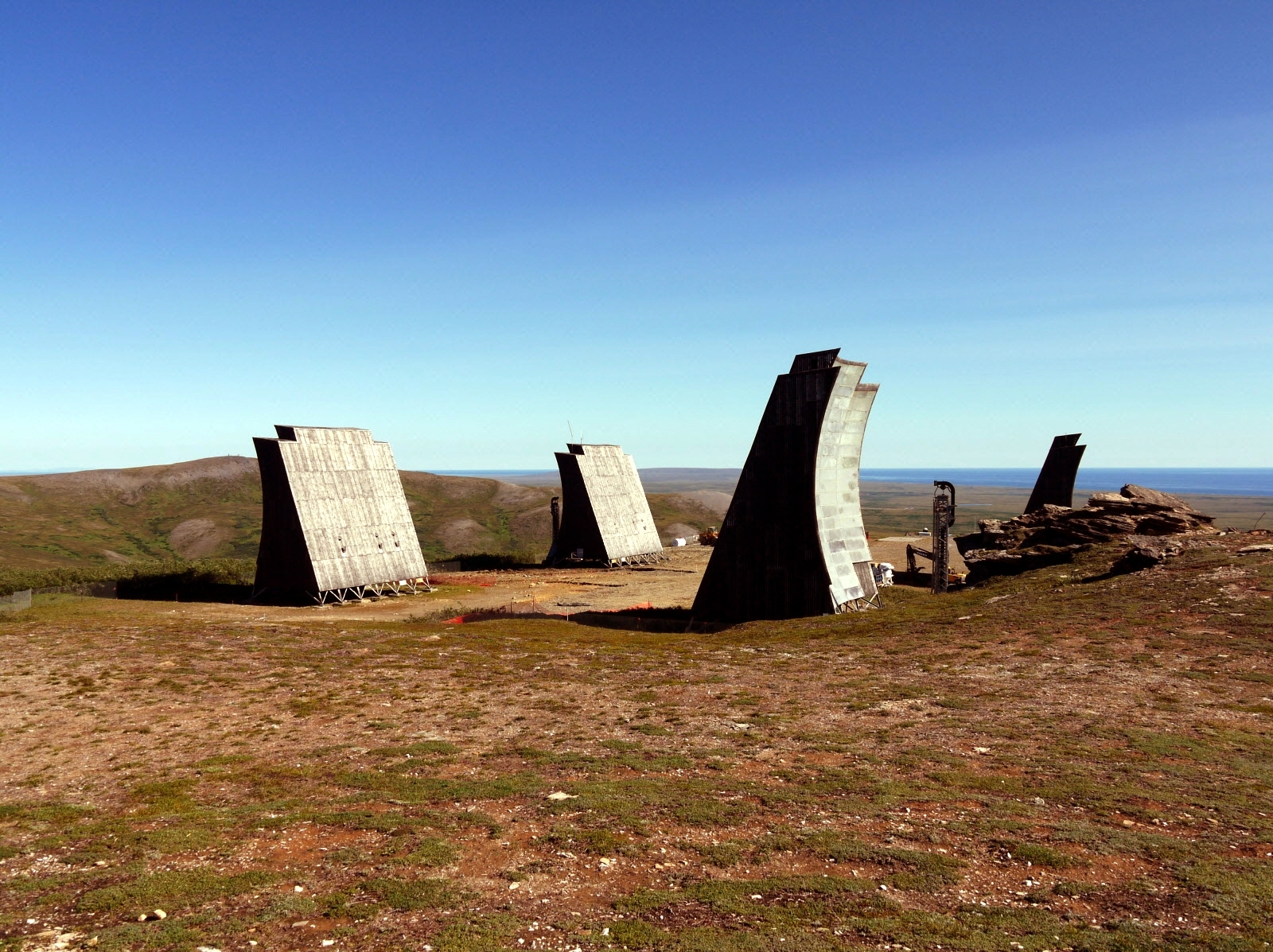
Alaska's White Alice portion of the Army Signal Corps' ACAN Network
-- Army Communication During The Cold War --
The ACAN network extended around the world. Pictured below is a portion of it that passed through Alaska, on its way to the lower 48. This portion was known as the White Alice Communication System.
White Alice was conceived in the 1950s when Alaska had only basic telephone communication systems. Prior to White Alice only one phone call at a time could be placed from Nome to Fairbanks. Communication improved after White Alice was installed, but even in the mid 1960s an Anchorage resident had to go to one location downtown to place a call to the lower 48. While White Alice was run by the Air Force, it was designed by the Army Signal Corps and built by the Army Corps of Engineers.
The tropospheric scatter portion of this system operated around 900 MHz, and utilized both space division and frequency division multiplexing involving a maximum of 132 simultaneous voice channels. The tropospheric hops used pairs of 60 ft (18 m) or 120 ft (37 m) parabolic, billboard like reflectors, shown in the picture below. Having two antennas allowed for space diversity, meaning that if tropospheric conditions degraded on one path, the second path might still be clear and communications would not be disrupted. For frequency diversity, each antenna transmitted two separate frequencies. Using both frequency and space diversity was called quad diversity. System power output for most shots was 10 kW and used 60 ft (18 m) antennas. Longer shots used 120 ft (37 m) antennas with 50 kW and shorter shots used 1 kW and 30 ft (9 m), round parabolic dishes.
